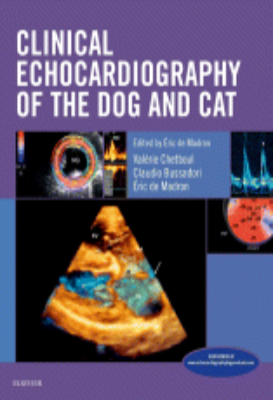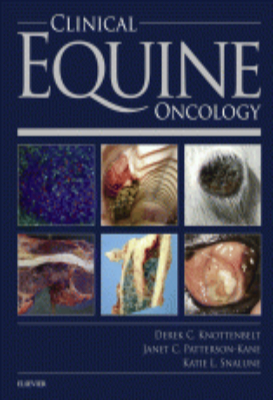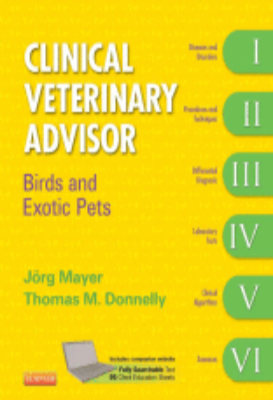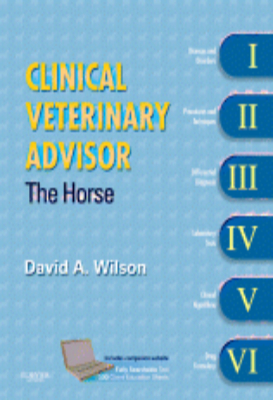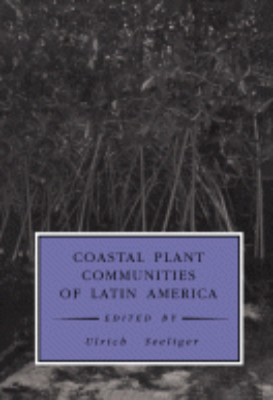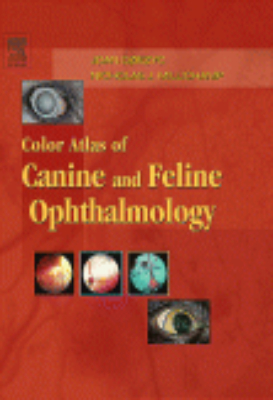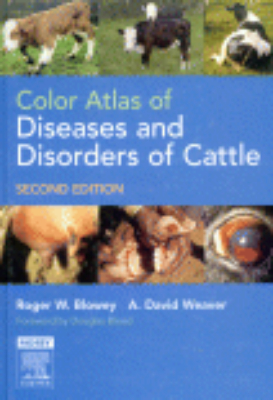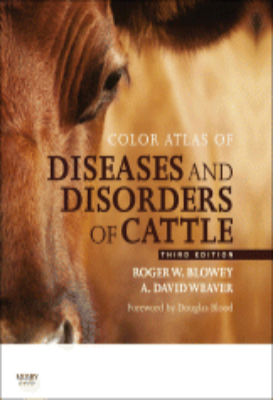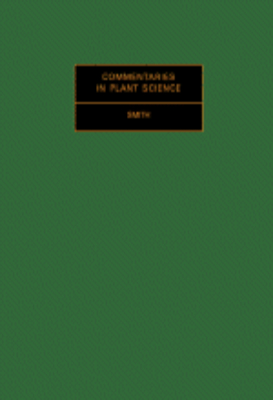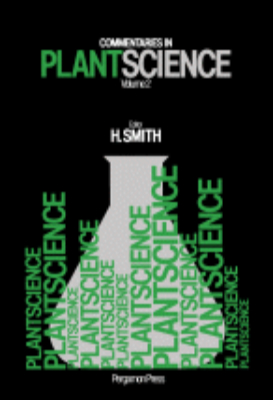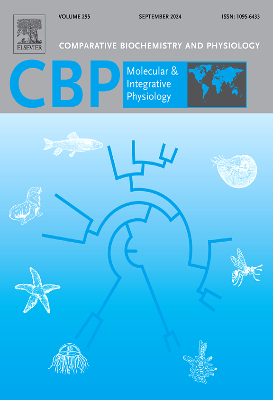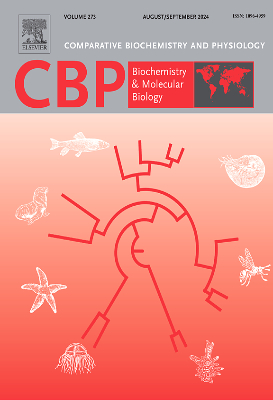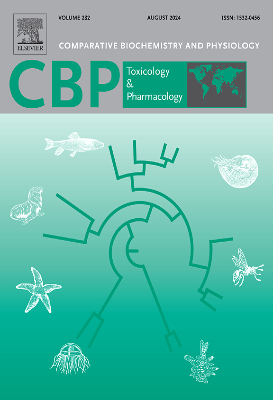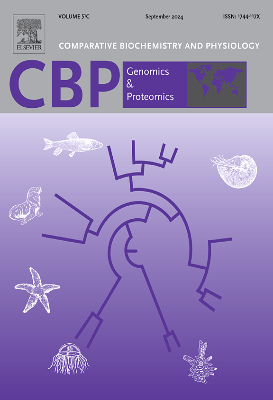E-Resources
Clinical Biochemistry of Domestic Animals: Third Edition 1980
Clinical Biochemistry of Domestic Animals, Third Edition, represents a major revision of the previous editions. Since the publication of the first edition of ""Clinical Biochemistry of Domestic Animals,"" veterinary clinical biochemistry has enjoyed a virtual explosion of new knowledge commensurate with the increased importance of companion animals, the livestock industry, and experimental animals. This third edition brings together some of the most important areas of clinical biochemistry pertinent to these sectors. For this purpose, new chapters on the reproductive hormones and clinical enzymology have been added, in addition to a rewriting of the chapters on renal function and plasma proteins and extensive revisions of all other chapters. The volume contains 18 chapters and opens with discussions of carbohydrate and lipid metabolism and associated disorders. This is followed by separate chapters on serum proteins and the dysproteinemias; porpyhrins; clinical enzymology; liver, pancreatic, and kidney function; and the physiology and pathophysiology of body fluids. Subsequent chapters deal with pituitary, adrenal, and thyroid function; skeletal muscle function; calcium, phosphorus, magnesium, and iron metabolism; the mechanisms of homeostasis; and cerebrospinal fluid physiology.
Clinical Biochemistry: Volume 1
Clinical Biochemistry: Contemporary Theories and Techniques, Volume 1 is a collection of papers that deals with the biochemistry of aging, managerial techniques, the evaluation of kits, and autoimmune diseases. One paper discusses laboratory management for clinical chemiststhe administration of people, the application of budgets, the planning process, and the adoption of decision-making strategies. The government has also issued federal legislations such as the "Clinical Laboratory Improvement Act, 1967" and the "National Heath Planning and Resources Development Act of 1974" which are changing the way laboratories are doing business. Another paper describes areas of safety concerns specific to the environment of the laboratory that require technologies not readily available to the laboratory technician. These safety problems concern radioactivity and infectious etiologic agents. Another paper discusses criteria recommendations for kit selection in clinical laboratories, for example, the list issued by the Center for Disease Control and the standards issued by the National Committee for Clinical Laboratory Standards. Another paper explains the uses of mathematics in clinical chemistry, including the application of the Allen Correction, the Henderson-Hasselbalch Equations, empirical curve fitting, standard deviation, standard error. Other papers present guidelines in dealing with autoimmune diseases and in determining specific proteins in plasma, cerebrospinal fluid, and other biological fluids. This collection is suitable for clinic and laboratory administrators and managers, for chemical chemists, and investigators or technicians involved in laboratory work.
Clinical Biochemistry: Volume 2
Clinical Biochemistry: Contemporary Theories and Techniques, Volume 2 is a collection of papers that deals with coagulation chemistry, inborn errors of metabolism (IEM), and the biochemistry of aging. One paper explains the biochemistry and clinical importance of lipoprotein-X (LP-X) as a marker for obstructive jaundice and also as a pointer in the deficiency of lecithin-cholesterol acyltransferase (LCAT), a rare inborn error of metabolism. Another paper presents guidelines in determining radioimmunoassay that are used, for example, in identifying enzymes produced by various malignant lesions. One paper reviews the basic molecular events and interactions involved in the blood clotting process and its related systems. To determine inborn errors of metabolism, the investigator can use screening techniques, prenatal diagnosis or therapy, and laboratory procedures related to IEM. To correct errors at the gene level, transgenosis and genetic engineering use recombinant DNA research techniques involving the introduction of a foreign DNA into the host cell. Some examples of IEM are phenylketonuria and hyperphenylalaninemia without PKU. This collection can prove useful for the clinical chemists, endocrinologists, internists, medical practitioners, and investigators involved in research on biochemistry.
Clinical Biochemistry: Volume 3
Clinical Biochemistry: Contemporary Theories and Techniques, Volume 3 broadens the scope of clinical biochemistry, discussing relevant aspects of serology, microbiology, monoclonal antibody techniques, and instrumentation. This volume includes the biochemical monitoring of cancer, use of chemical and physiochemical approaches to detecting and identifying etiological agents in clinical specimens, and monoclonal antibodies in clinical investigations. The serologic methods in disease diagnosis, instrumentation in clinical chemistry, and hemoglobin analysis and hemoglobinopathies are also deliberated. This text likewise covers the conventional microbiological techniques, serology of streptococcal infections, and impact of microprocessors on clinical instrumentation. This book is a good reference for clinicians interested in theories and techniques related to clinical biochemistry.
Clinical Echocardiography of the Dog and Cat
Covering both classical modalities of echocardiography and newer techniques, Clinical Echocardiography of the Dog and Cat shows how to assess, diagnose, and treat canine and feline heart disease. A clinical approach demonstrates how these modalities may be used to acquire images, and then how you can recognize and identify patterns, relate them to different diseases, and manage patient care with those findings. The print book includes a companion website with 50 videos of cardiac ultrasound exams and procedures. Written by veterinary cardiology specialists and echocardiographers Eric de Madron, Valerie Chetboul, and Claudio Bussadori, this indispensable echocardiology resource is ideal for general practitioner veterinarians as well as specialists, including cardiologists and radiologists.
Clinical Equine Oncology
Diagnose common equine tumors accurately and find clinical information quickly! Clinical Equine Oncology describes the cellular basis of cancer and its etiopathogenesis, along with the principles of diagnosis, treatment, and management of cancer cases. This comprehensive resource offers more than just facts and diagrams hundreds of detailed photographs make it easier to recognize and evaluate more than 50 types of tumors. Its useful to anyone working in the equine field, whether youre a veterinary surgeon, a practicing vet, equine dentist, or veterinary student. Written by a recognized expert on equine medicine, Derek Knottenbelt, this is the only book on the market that is completely dedicated to coverage of cancer in horses!
Clinical Genetics
Clinical Genetics: Problems in Diagnosis and Counseling presents the proceedings of the Twelfth Annual New York State Health Department Birth Defects Symposium. The book provides practical information applicable to counseling situations for selected diagnoses and a summary of the limitations of diagnosis and counseling for genetic disorders. The text contains chapters devoted to the description of restriction enzyme site detection and prenatal diagnosis of hemoglobinopathy; counseling for mental retardation of unknown etiology, for idiopathic dysmorphic syndromes, and for psychiatric disorders; interpretation of prenatal cytogenetic diagnosis; preconceptual vitamin supplementation; and cystic fibrosis. Geneticists, clinicians, and physicians will find the book insightful.
Clinical Genomics
"Clinical Genomics provides an overview of the various next-generation sequencing (NGS) technologies that are currently used in clinical diagnostic laboratories. It presents key bioinformatic challenges and the solutions that must be addressed by clinical genomicists and genomic pathologists, such as specific pipelines for identification of the full range of variants that are clinically important. This book is also focused on the challenges of diagnostic interpretation of NGS results in a clinical setting. Its final sections are devoted to the emerging regulatory issues that will govern clinical use of NGS, and reimbursement paradigms that will affect the way in which laboratory professionals get paid for the testing. Key Features. Simplifies complexities of NGS technologies for rapid education of clinical genomicists and genomic pathologists towards genomic medicine paradigm. Tried and tested practice-based analysis for precision diagnosis and treatment plans. Specific pipelines and meta-analysis for full range of clinically important variants"
Clinical Veterinary Advisor: Birds and Exotic Pets
Providing accurate, at-a-glance information on managing the diseases of birds and exotic pets, Clinical Veterinary Advisor: Birds and Exotic Pets is the only comprehensive resource on the market covering birds, reptiles, small mammals, and other non-traditional pets. Concise summaries of hundreds of common medical problems help you consider differential diagnoses, recommend diagnostic tests, interpret results mindful of unique species differences, utilize important concepts of species-specific husbandry and nutrition, prescribe treatments, and provide follow-up care. With contributions from recognized avian and exotics experts and edited by Jrg Mayer and Thomas M. Donnelly, this clinical reference provides all the information you need in one book!
Clinical Veterinary Advisor: The Horse
No other equine quick reference comes close to providing this much accurate, timely, and clinically useful diagnostic and therapeutic information. Clinical Veterinary Advisor: The Horse is six books in one -- Diseases and Disorders, Procedures and Techniques, Differential Diagnosis, Laboratory Tests, Clinical Algorithms, and a Drug Formulary. Plus, a companion website gives you convenient, searchable access to the full text and other useful tools. Covering hundreds of current topics in a concise at-a-glance format, this authoritative resource from David A. Wilson, DVM and a group of respected contributors is a must-have guide for the busy equine or mixed-practice practitioner.
Clinical Veterinary Toxicology
This book covers all aspects of toxicology, including toxic diseases of large animals, small animals, and exotic pets. It provides key information on how poisons affect the body, how the body responds to a foreign substance, how poisonings are diagnosed, and how poisonings are treated. Coverage includes every organ system of every species of animal with details on each body systems susceptibility to poison. Poisons affect animals differently depending on species, breed, age, gender, health status, and reproductive status. This resource addresses these differences, allowing the veterinarian to determine the class of toxicant, the mechanism of action, and the proper course of treatment. If confronted with an unknown poison, the information in this book will assist the veterinarian in formulating a list of potential poisons based on the clinical signs that the animal is exhibiting, and in choosing the appropriate tests to narrow the list to one or a few possible poisons.
Coastal Plant Communities of Latin America
"Published ecological information on Latin American coasts is scarce, despite the growing need for a comprehensive examination of coastal processes on a global scale. This book brings together details on benthic marine algae, seagrasses, salt marsh, mangrove, and dune plant communities throughout Latin America. Researchers and graduate students in plant ecology, marine biology, and environmental management will benefit from the valuable information in this book. Key Features. Distribution and community ecology. Modern research approaches. Coastal management possibilities"
Color Atlas of Diseases and Disorders of Cattle: 2003
The second edition of the Color Atlas of Diseases and Disorders of Cattle again illustrates all the conditions encountered in cattle worldwide. This new edition has been extensively revised and expanded to have more (now 752) illustrations, primarily of live animals.The revised text now includes sections on management and control for the important disorders. Newer conditions such as necrotic enteritis, toe ulcers, heel ulcers and tail necrosis have been added. The illustrations themselves have been reviewed. Many have been replaced, while others have been added, so that Foot and Mouth Disease has six and Rinderpest seven colour illustrations. Cross-references to other conditions, a major aid to differential diagnosis in the field, have been strengthened.Over 70 foreign contributors from the Far East (Japan, China) to South America (Brazil,Argentina), Africa (South Africa, Kenya, Somalia) and the United States (Pennsylvania, Florida, Missouri) have been joined by a further thirty from the UK. The emphasis of the atlas remains the visible signs of diseases and disorders in the live animal, and this gives the book a unique scope. This new edition will re-establish the firm place which the atlas already has in the veterinary market for cattle practitioners, government and industry veterinarians, as well as veterinary and agricultural students, and managers of large-scale cattle enterprises throughout the world.
Color Atlas of Diseases and Disorders of Cattle: 2011
The Color Atlas of Diseases and Disorders of Cattle is the established and respected illustrated guide to the full range of conditions encountered in cattle worldwide. For this new edition the atlas has been redesigned to present over 840 colour illustrations and clearer than ever coverage of conditions, with a special emphasis on ease of use. The text has been updated and rewritten to encompass many new conditions including burns, bleeding calf syndrome, rib fracture and jejunal hemorrhagic syndrome, while treatment of existing conditions has been expanded. The emphasis of this new edition of the Color Atlas remains the visible signs of diseases and disorders in the live animal. In its third edition guise, the atlas is an indispensable reference for both experienced and novice cattle practitioners, government and industry veterinarians, as well as veterinary and agricultural students, and managers of large-scale cattle enterprises throughout the world.
Color Atlas of Diseases and Disorders of the Foal
Color Atlas of Diseases & Disorders of the Foal is intended for any veterinarian who treats foals, either occasionally or on a routine basis, and serves as an invaluable source of practical clinical information. The illustrations cover all aspects of clinical presentation, diagnosis, treatments, and outcomes and provide a clear picture of what veterinarians should be looking for, perfect for timely intervention and more successful outcomes. Plus, two highly experienced editors share their expertise along with contributions from many well-known and highly respected veterinarians for the most comprehensive information available.
Color Atlas of Veterinary Pathology
For over 20 years, the first edition of this book provided veterinary students and pathologists with an invaluable fast and structured survey of the complete field of veterinary pathology. Now in its second edition, the authors have thoroughly revised, updated and added to both images and text, with the focus still on domestic animals. Each chapter now begins with a short, descriptive text on each body system covered in the atlas. It supports understanding of disease and disease processes by visualizing how cellular pathology, inflammation, circular disturbance and neoplasia are expressed in the different organs and tissues. For this purpose it demonstrates the general morphological reactions of organs and tissues using examples from specific veterinary pathology.
Commentaries in Plant Science: 1976
Commentaries in Plant Science is a compilation of reviews of recent developments in pure and applied plant science. It covers a wide range of topics such as carboxylation, photorespiration, carbon assimilation, mating reaction, protein evolution, recombination, and photoperiodic induction. The book is comprised of 21 commentaries and begins with some of the physiological processes in C4 plants. The succeeding chapters deal with stomatal control of entry of air pollutants, mating reactions in yeasts, uptake and expression of DNA by plants, mechanics and metabolisms of guard cells, breeding for modified fatty acid composition, gravity sensing mechanism and response mechanism of root caps. It also outlines the functions of lectins, plant virus inhibitors, and cytokinins. Research workers, teachers and students who wish to broaden their knowledge about plant science will find this book very useful.
Commentaries in Plant Science: Volume 2
Commentaries in Plant Science, Volume 2 is a collection of papers that reviews developments in the pure and applied science of plants. One paper discusses the role of supercooling in the winter survival mechanism of and ecological distribution of many plant communities. Another paper evaluates the Cholodny-Went theory of shoot geotropism that there is strong evidence in auxin redistribution occurring in a rapid manner to cause geotropic curvature. The magnitude of auxin redistribution is too rare to cause differential growth. Some insect pests have specific nutritional requirements and well-developed mechanisms for selecting their plant host. One paper enumerates the benefits of using insect-resistant host plant varieties, such as the non-incurrence of extra costs, these are environmentally safe, and are compatible with most other methods of pest control. Another paper discusses the nature and possible genetic manipulation of a complex bacteria, the actinomycetes, as well as its role as antibiotic producer. Another paper examines the nature of seed storage proteins and of the cellular processes that are related in their synthesis and deposition especially in cereals and legume. This collection is suitable for botanists, genecologists, taxonomists, biologists, and investigators whose works involve cell membrane research.
Comparative Biochemistry of Parasites
Comparative Biochemistry of Parasites contains the proceedings of an international symposium organized by the Janssen Research Foundation and held at Janssen Pharmaceutica in Belgium on September 1-3, 1971. The symposium reviewed progress in the understanding of the physiology and biochemistry of parasites such as protozoa and helminths. Organized into 34 chapters, this volume begins with an overview of early research on parasite biochemistry before turning to a discussion of antischistosomal drugs and their biochemical effects on parasites. The reader is then introduced to the biochemistry of carbohydrates in nematodes and cestodes; neurotransmitters in trematodes; pharmacological aspects and biochemical effects of tetramisole; the mechanism of action of berenil (Diminazene) and related compounds; and dihydrofolate reductases in parasitic protozoa and helminths. Other chapters focus on the loss of fatty acid biosynthesis in flatworms, the cytochrome system in Kinetoplastidae, oxidative phosphorylation in Moniezia mitochondria, and the role of non-heme iron in cestode respiration. Scientists, particularly physiologists and biochemists, will find this book an invaluable source of information on parasite physiology and biochemistry.
Comparative Biochemistry: Volume 1 1960
Comparative Biochemistry: A Comprehensive Treatise, Volume I: Sources of Free Energy focuses on the desire to provide a sound, critical, and provocative summary of knowledge in comparative biochemistry, including thermodynamics, biological systems, oxidation, visual systems, and aerobic and anaerobic reactions of inorganic substances. The selection first offers information on the introduction to comparative biochemistry and thermodynamics of living systems. Discussions focus on comparative point of views in biology and biochemistry, classical thermodynamics, reaction rates in chemical and biological systems, and thermodynamics of open systems. The text then ponders on comparative mechanisms for fatty acid oxidation; phosphoric acid anhydrides and other energy-rich compounds; and onium compounds and their biological significance. The publication examines phototropism and phototaxis and distribution and evolution of visual systems. Topics include phototropism in plants, analysis of phototropic reaction, nature of photoreceptors, role of auxin in phototropism of plants, visual systems of vertebrates, and habitat relations. The book also tackles aerobic and anaerobic reactions of inorganic substances and comparative biochemistry of glycolysis. The selection is a dependable source of data for readers interested in the sources of free energy.
Comparative Biochemistry: Volume 2 1960
Comparative Biochemistry: A Comprehensive Treatise, Volume II: Free Energy and Biological Function focuses on methodologies, processes, and mechanisms involved in the biological transformations of energy. Composed of contributions of various authors, the book first discusses free energy and the biosynthesis of phosphates. The thermodynamics of phosphoryl and phosphate transfer reactions; enzymatic synthesis of phosphates; and phosphoryl transfer sequences in metabolism are considered. The selection also looks at the utilization of free energy in the biosynthesis of saccharides, proteins, and peptides; ammonia metabolism; and biosynthesis of urea. The book also describes muscular contraction. The structure of myofibril; protein components of myofibril; localization of myofibrillar components; contraction of adenosine triphosphate; and adenosine triphosphatases of muscles are discussed. Other mechanisms that produce movements are also noted. The text ends with discussions on experiments on active transport, balance of electrocytes and water, mechanisms of osmoregulation, bioluminescence, and nerve conduction and electrical discharge. The book is a good source of data for readers interested in studying free energy.
Comparative Biochemistry: Volume 3 1962
Comparative Biochemistry: A Comprehensive Treatise, Volume III: Constituents of Life Part A focuses on the processes, methodologies, and mechanisms involved in the biological transformations of matter. Composed of contributions of authors, the book first gives emphasis to the comparative features of fatty acid occurrence and distribution. The formation of fatty acids and lipids in living organisms; naturally occurring fatty acids and lipids; relationship between types and distribution of fatty acids and their biological origin are considered. The text also looks at the structure and distribution of sterols, steroid metabolism of lipids, and the distribution and metabolism of phospholipids. The book focuses as well on the structure and occurrence of natural monosaccharides and oligosaccharides. The occurrence of commoner monosaccharides and oligosaccharides; the compositions, reactions, and characteristics of nucleosides, nucleotides, and nucleic acids; and chromatographic examinations of biological materials for free sugars are considered. The text also looks at the structure, metabolism, and distribution of terpenoids and quinones. The book is a vital source of information for readers wanting to study the processes, methodologies, and mechanisms involved in the biological transformation of matter.
Comparative Biochemistry: Volume 4 1962
Comparative Biochemistry: A Comprehensive Treatise, Volume IV: Constituents of Life Part B focuses on the distribution, biogenesis, and metabolism of cells and organisms. Composed of various literature, the book first looks at the optical asymmetry of metabolites. The natural occurrence of D-amino acids and L-sugars; significance of purity; optical asymmetry and protein structure; and the relationship of optical asymmetry and cancer are discussed. The text also discusses structural studies on cellulose, starch, and glycogen; biochemistry of lignin formation; structure and localization of nucleic acids; and intraspecific and interspecific variations of protein molecules. The book considers the metabolism of aromatic amino acids, structural and chemical properties of keratin-forming tissues, sclerotization, and blood coagulation. The text further discusses metamorphosis and biochemical adaptation in amphibians. The importance of intrinsic tissue sensitivity in tadpoles; comparative morphological alterations; and the increase in serum albumin and serum protein are considered. The book focuses as well on the structure, distribution, and metabolism of porphyrins, pteridines, and carotenoids. The selection is a good source of data for researchers wanting to study the distribution, biogenesis, and metabolism of cells and organisms.





